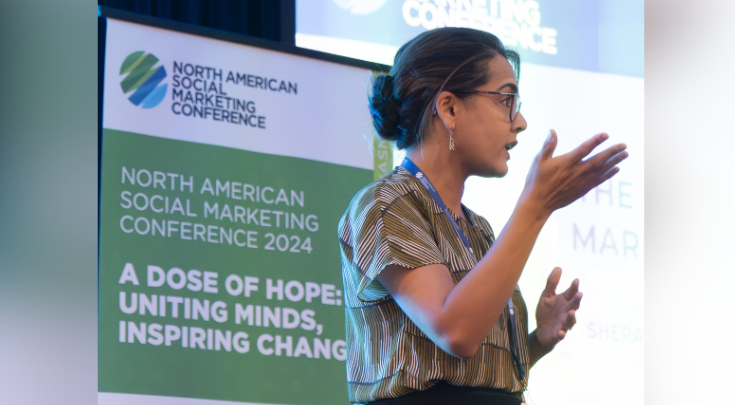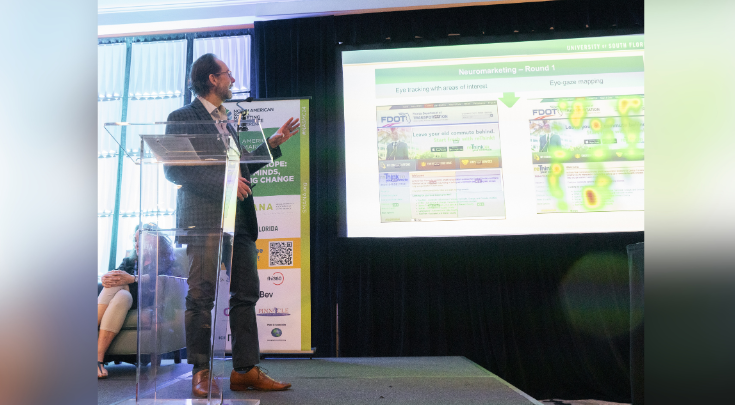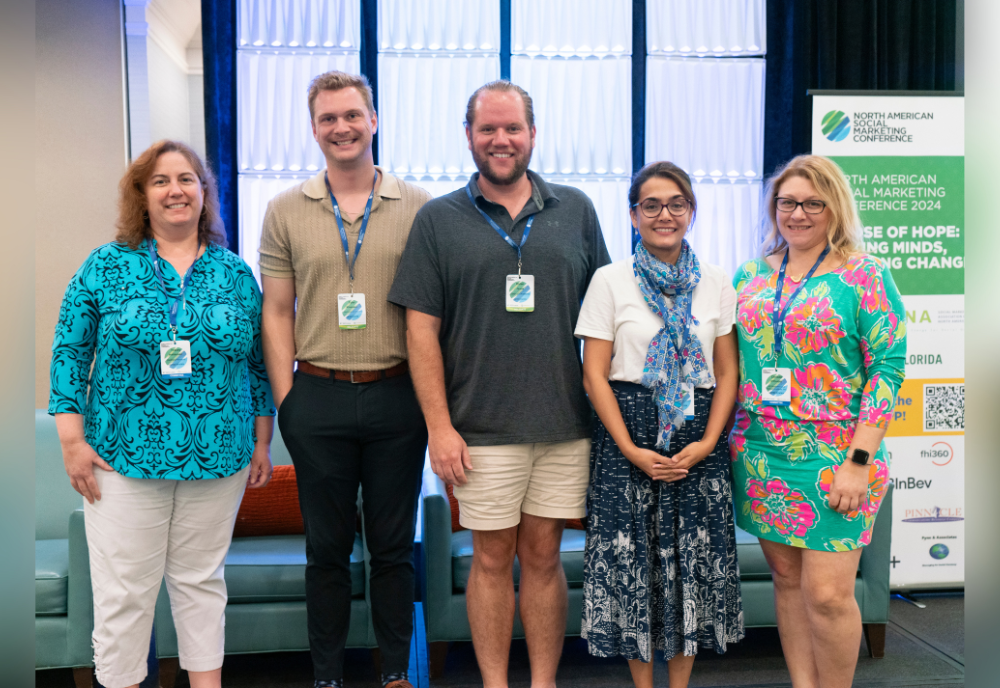Marketers want to get inside your mind − literally.
That’s the focus of a multi-disciplinary study by USF’s College of Public Health (COPH), Center for Urban Transportation Research (CUTR) in the College of Engineering and MUMA College of Business. Working with agencies in the public sector the group focused on the use of neuromarketing to test marketing materials and how people respond to messaging about certain needs, in this case, transportation options.
The project, Improving Effectiveness of Communication Messages and Materials Using Neuromarketing, won a Silver Social Marketing Award from the Social Marketing Association of North America (SMANA) in the print advertising category. The submission describes the impact of pre-testing messaging using neuromarketing to assess attention, emotional response and decision-making regarding advertising about transportation.
“This is about how to get people to change their behavior in ways that benefit them personally as well as society as a whole,’’ said Dr. Mahmooda Khaliq Pasha, an associate professor in the COPH and principal investigator for the study. “In this case, it’s about how do we get people to stop using their vehicles and use public transit, or carpooling, cycling or walking.’’

Dr. Mahmooda Khaliq Pasha presented on the research study during a plenary. (Photo courtesy of Pasha)
The outcome is beneficial because it inevitably affects the environment, said Philip Winters, director of the transportation demand management program at CUTR and a co-author of the study.
“Changes in commuter travel behavior can help reduce congestion and pollution as well as reduce the cost and stress of commuting to work,’’ he said.
SMANA’s award competition is devoted to behavioral and social change marketing and employs a rigorous blind peer-review process. Each submission is independently reviewed by three judges who are experts in the field of social marketing. Only the highest-scoring submissions were honored with awards in recognition of their outstanding and innovative social marketing programs.
The judges were impressed with the USF team’s thoroughness, which involved the use of eye-tracking, eye-gaze mapping and market research. The team sought to evaluate existing communication materials and understand the commuter’s subconscious engagement and response, then compared it with revised – and more personalized − material.
Using a community-engaged approach, the team narrowed a field of 121 public transportation promotional materials down to 15 with seven distinct calls to actions. The information was tested, revised and retested using neuromarketing techniques. The effectiveness of the materials increased with regard to clarity of call to action, relevancy, ability to persuade and intention to change.
The project illustrates the importance of testing messages prior to large-scale dissemination to improve effectiveness and to use techniques that counter response bias.

Dr. Rob Hammond presented on the research during a plenary. (Photo courtesy of Pasha)
“What I learned is that these materials often are developed based on funding priorities or from information that was already in place,’’ Pasha added. “My question is have you tested this information? Have you engaged with the intended audience? Will the materials persuade them to change their behavior.’’
The revised material was more clear, relevant, attractive and persuasive, and the researchers hope it moves people toward changing their behavior. The study shows how existing communication materials could be strengthened based on simple guidelines that can alter a commuter’s subconscious engagement and response.
“The goal is to develop materials that provide information that is clear to the commuter, appeals to them and helps to make it more relevant to them,’’ Pasha said. “It’s to introduce them to the idea of using other forms of transportation, versus using their personal vehicle. These services are funded by their taxes, so we want to make sure we are being good stewards of the funds and making sure the commuters are aware of what is available to them.’’
In addition to Pasha and Winters, the authors of the study include Dove Wimbish, COPH graduate research assistant; Dr. Rob Hammond, director of MUMA’s Center for Marketing and Sales Innovation; and Yuqi Wang, MUMA graduate student.
The study received financial support from the Florida Department of Transportation.
